Commentary
From Compromise To Crackdown: How Modi’s War On Naxals Is Succeeding Where UPA Failed
Prakhar Gupta
May 26, 2025, 05:13 PM | Updated 05:35 PM IST
Save & read from anywhere!
Bookmark stories for easy access on any device or the Swarajya app.
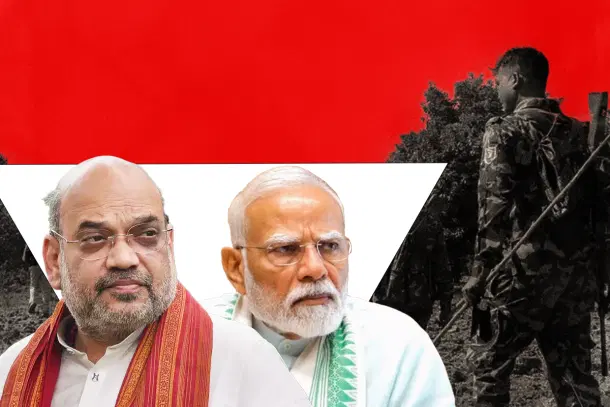
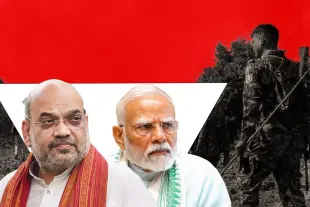
In the dense jungles of India’s heartland, Naxalism has long cast a shadow, exploiting poverty and neglect to fuel a brutal insurgency.
During the UPA’s Congress-led tenure, this threat grew unchecked, as indecision and a soft approach allowed Maoists to terrorize tribals and ambush security forces with impunity. The government’s empty promises and muddled priorities left communities trapped in fear, with rebels dictating terms in forgotten villages.
That era of hesitation stands in sharp contrast to today’s efforts, where a focused campaign is reshaping the fight. The current push, driven by a blend of unrelenting operations and development, is hitting Naxals hard, shrinking their grip and bringing governance to areas once ruled by fear.
While Congress and its allies, like its leadership in Telangana, a state that has borne the brunt of Naxal violence, double down on calls for talks—repeating a tired playbook that backfired spectacularly in the past—the ongoing offensive shows what’s possible when action takes precedence.
This isn’t just a battle against insurgents; it’s a struggle to restore India’s heartland to its people, proving that resolve and pragmatism can rewrite a story long mired in bloodshed and betrayal. The journey from compromise to confrontation reveals what India can achieve when it dares to act.
Why the UPA failed
The UPA's approach to the Naxalite insurgency was not just flawed—it was a policy failure of catastrophic proportions. Led by the Congress party, the UPA’s strategy oscillated between hollow rhetoric and ineffectual action, leaving security forces exposed and civilians vulnerable. Even if reluctantly, then-Prime Minister Dr Manmohan Singh identified Naxalism as “India’s greatest internal security therat” in 2009, but his government’s actions never matched the urgency of that declaration.
One of the most searing examples of this failure came in April 2010 in the forests of Dantewada, Chhattisgarh. In a meticulously planned ambush, Naxalites massacred 76 Central Reserve Police Force (CRPF) personnel—one of the deadliest attacks in India’s counter-insurgency history. The brutality of the assault shocked the nation. But the government’s response was muted and uninspiring. No significant policy shift followed. No accountability was established. It was business as usual in New Delhi.
Tragically, the horror repeated itself just three years later. In May 2013, the Darbha Valley became the site of another major assault—this time targeting the Congress leadership itself. Naxalites ambushed a convoy and killed 29 people, including senior party leaders and Mahendra Karma, the architect of the Salwa Judum anti-Naxal movement. Ironically, even the blood of its own leaders was not enough to jolt the UPA out of its inertia.
Part of the problem lay in the UPA’s ideological proximity to those who were either sympathetic to or soft on the Naxal cause. The policy paralysis wasn’t accidental—it was, in many ways, a reflection of internal ideological confusion.
The term “urban Naxals” gained prominence later, but even during the UPA years, the government’s closeness to far-Left activists who often downplayed Naxalite violence and framed it as a response to state oppression. The National Advisory Council (NAC), chaired by Sonia Gandhi, included several members who held radical far-left views and were vocally critical of strong state action against Naxals.
The first UPA government, in fact, survived on support from the Communist Party of India (Marxist)-led Left Front, which, while not endorsing armed struggle, shared a blanket ideological overlap with the Naxalite worldview. This uneasy ideological proximity translated into a soft-glove approach on the ground, where security imperatives were often sacrificed at the altar of political correctness. If today the CPI(M) is shamelessly opposing Operation Kagar, a full-scale crackdown on Naxalites, one can only imagine the extent of its influence when it held the keys to the UPA’s survival.
Despite all the rebranding efforts, the Congress of 2025 remains fundamentally unchanged — still heavily influenced by the far-left clique surrounding the Gandhis. Rahul Gandhi continues to align himself with Kanhaiya Kumar, while Priyanka Gandhi leans on Sandeep Singh — both former JNU student leaders with hard-left credentials.
It’s no surprise that during much of the UPA years, left-wing extremist violence actually escalated rather than diminished. In 2004, when the UPA came to power, there were 1,533 reported incidents of LWE and 566 deaths. By 2010, under its watch, the number of incidents had climbed to 2,213, and deaths had nearly doubled to 1,005.
The dysfunction was compounded by deep divisions within the Congress leadership itself. Operation Green Hunt, launched in 2009 as the UPA’s flagship counter-insurgency initiative, was already plagued by poor coordination and inadequate resources. But worse, it lacked unified political backing.
Home Minister P Chidambaram—one of the few within the government who advocated a hardline approach—faced open attacks from within his own party. Most notably, Digvijaya Singh, then considered a close confidant of Sonia Gandhi, repeatedly undermined the operation. Singh publicly questioned the rationale behind Green Hunt, casting it as a militaristic overreaction and calling for dialogue instead, and even called Chidambaram "intellectually arrogant" due to disagreements over the operation.
The statistics paint a grim picture. In 2009, the year Congress returned to power with more number of seats than before, India witnessed the highest number of Naxal-related incidents between 2004 and now. Despite the consistent bloodshed, the UPA failed to develop a comprehensive, long-term strategy to dismantle the Maoist network or to tackle the ideological roots of extremism. Even the 2009 ban on the Communist Party of India (Maoist) felt more like a symbolic gesture than a genuine crackdown.
Apart from the burden of all these contradictions, Operation Green Hunt failed militarily because it was poorly coordinated, under-resourced, and strategically rigid. Security forces lacked a unified command structure, resulting in fragmented operations between central and state agencies with little intelligence sharing.

Troops, especially CRPF units, were ill-equipped and inadequately trained for jungle warfare, facing Maoist guerrillas who knew the terrain intimately. The operation relied on outdated intelligence and predictable tactics, allowing Naxals to either ambush forces or melt away into dense forests.
Ultimately, the UPA's handling of the Naxalite insurgency stands as a sobering reminder of what happens when tough talk is not matched by tough action.
The Modi-Shah approach to fighting naxals
The Modi-Shah approach to naxalism has been marked by clarity, coordination, and resolve—qualities that were sorely lacking in the UPA years. Unlike the earlier reactive stance, the NDA’s response has been both preemptive and punitive, backed by political will and ground-level execution.
There’s been a conscious effort to empower security forces, plug intelligence gaps, and launch sustained, long-duration operations. This is not a government that waits for tragedy to respond—it goes after the threat proactively, choking Naxalite funding, dismantling networks, and denying them safe havens through the expansion of camps and fortified police stations.
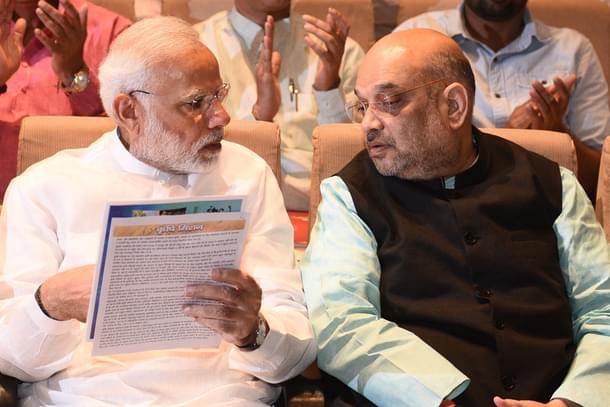
In the red belt stretching across central and eastern India, a quiet but resolute transformation has been underway. For decades, Maoist insurgents held parallel authority, collecting levies, issuing diktats, and striking fear.
But under Narendra Modi government, the Indian state has mounted its most coordinated and sustained effort yet to reclaim these areas—not just with boots on the ground, but with schools, roads, telecom towers, and bank accounts.
National Policy and Action Plan
At the core of this turnaround is the National Policy and Action Plan on Left Wing Extremism (2015)—a document that has come to define the government’s approach: strike hard, develop fast, and never leave a vacuum. The plan’s premise is simple—security and development must go hand in hand. One without the other is a half-measure.
In the last decade, the change is visible on the ground. Back in 2014, there were only 66 fortified police stations in LWE-affected areas. Today, there are over 600. A total of 280 new security camps have sprung up since 2019 alone.
Simultaneously, the government has launched massive infrastructure and welfare programs. In villages where Maoists once held kangaroo courts, today you’ll find banking correspondents, ATM machines, and even mobile towers. A special central assistance scheme was launched in 2017 to plug urgent infrastructure gaps in LWE-hit districts. With Rs 3,563 crore already released, SCA has brought electricity, clean water, and health centres to areas that had seen little governance in decades.
One of the key enablers of this shift is the Security Related Expenditure (SRE) Scheme, under which Rs 3,260 crore has been pumped in since 2014 to train state forces, support operations, and rehabilitate surrendered insurgents.
The government approved the Road Connectivity Project for LWE in 2016, allocating Rs 11,725 Crore to improve infrastructure across affected states, including 12,228 km of roads and 705 bridges. So far, 9,506 km of roads and 479 bridges have been completed—turning previously inaccessible terrain into arteries of movement and trade.
But connectivity isn't only about tarmac. The government has taken up the challenge of breaking the communication blackout in these regions. With three dedicated telecom projects, over 7,700 mobile towers have been installed already to ensure that by the entire LWE zone will be covered by mobile networks.
In many ways, the approach is both carrot and stick. On one side are CAPFs, CRPF battalions, and CIAT schools. On the other are ITIs, Skill Development Centres, and Eklavya Model Schools. In total, 48 ITIs, 61 SDCs, and 178 residential schools have been opened. Over 1,100 tribal youths have been recruited into security forces—offering both employment and a new narrative.
In 2024, the push gained further momentum when PM Modi launched the ‘Dharti Aaba Janjatiya Gram Utkarsh Abhiyan’ from Jharkhand—targeting full personal and public amenities in 15,000 tribal villages, impacting over 1.5 crore people.
The campaign reinforces the Modi government’s emphasis on 3-Cs: Road connectivity, Mobile connectivity, and Financial connectivity—seen as the holy trinity in breaking the insurgency’s ideological and logistical hold.
The Maoists, for long, thrived in the state’s absence—offering rough justice where none existed and filling the vacuum left by years of neglect. But today, the Indian state is turning up—in uniform, yes, but also with bank branches (1,007 opened), post offices (5,731), and ATMs (937). Over 37,000 banking correspondents are now operating in these areas, bringing financial inclusion to those who had never held a bank passbook before.
The government has not only created this infrastructure, but its no-nonsense approach to security has ensure that the development that it is sending billions on is irreversible - that it is not destroyed by the naxals, as was the case under UPA. The incidents of attacks on economic I infrastructure has come down from 365 in 2010 to 25 in 2024.
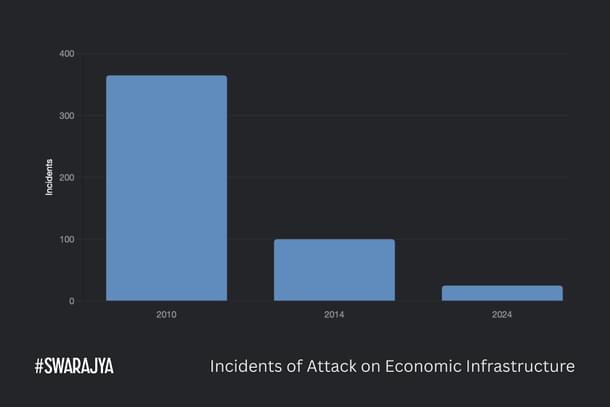
The strategy is yielding results. Intelligence intercepts show a cash crunch among top Maoist commanders. The NIA has launched probes into funding routes and shell networks, choking off critical lifelines. Long-duration operations are now standard practice, surrounding and eliminating guerrilla squads before they can slip away.
The story in numbers
The numbers tell a compelling story of turnaround.
Between 2004 and 2014, during the UPA government’s tenure, there were 17,679 Left-Wing Extremism (LWE) related incidents resulting in 6,984 deaths. In comparison, from 2014 to June 15, 2023, the number of incidents dropped to 7,649 with 2,020 deaths.
A detailed comparison of the nine-year periods before and after 2014 shows that LWE incidents decreased by 52 per cent, from 14,862 (May 2005–April 2014) to 7,130 (May 2014–April 2023). Similarly, deaths due to LWE declined by 69 per cent, from 6,035 to 1,868 in the same periods.
In 2014, 35 districts were listed among the worst affected by Naxalism—by 2025, this has dropped to just 6. The broader map of Naxal-affected districts has shrunk from 126 to 18. In 2014, 1,080 incidents were reported across 330 police stations in 76 districts. A decade later, in 2024, only 374 incidents occurred in 151 stations across 42 districts.
The loss of security personnel has fallen sharply too—from 88 deaths in 2014 to just 19 in 2024. Meanwhile, the number of Naxals neutralised has risen from 63 to 2,089, underlining the offensive edge of current operations.
Unlike during the UPA era, when LWE related incidents rose for a large part of its time in power, it has seen a singular decline under the NDA.

The Modi-Shah doctrine is clear: security will create the space for development, and development will close the door on the insurgency. More importantly, this approach marks a decisive evolution in India’s counter-Naxal strategy: a blend of hard security, smart governance, and irreversible development.
Operation Kagar - Taking the fight to Naxal strongholds
The Modi-Shah approach is proving effective, as demonstrated by the success of Operation Kagar. Launched on 1 January 2024, it is India’s largest-ever anti-Naxal campaign, aimed at eradicating the insurgency by March 2026. Named to signify a “final mission,” the operation targets Maoist strongholds in Chhattisgarh’s Bastar region, particularly the dense Abujhmad forests and the Karregutta (Black Hills) ranges along the Chhattisgarh-Telangana border—an area spanning 800 square kilometres.
As of May 25, 2025, the operation has inflicted severe losses on the CPI (Maoist), marking a turning point in India’s fight against Left-Wing Extremism (LWE).
The operation employs a four-pronged strategy:
1) establishing forward operating bases (FOBs) in Maoist strongholds like Puvarti, Pedia, Farsebeda, and Karregutta
2) Leveraging advanced intelligence through local informants, drone surveillance, and intercepted communications
3) Mobilising over 24,000 personnel from the Central Reserve Police Force (CRPF), its Commando Battalion for Resolute Action (CoBRA), District Reserve Guard (DRG), Special Task Force (STF), and Chhattisgarh Police
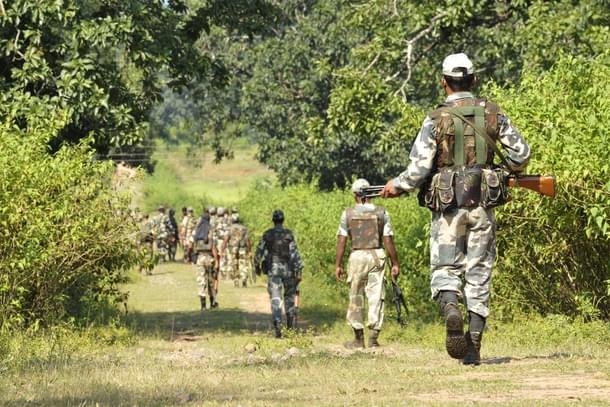
4) Integrating development projects like roads and schools to weaken tribal support for Maoists.
This multi-layered approach has disrupted Naxal logistics and recruitment.
Operation Kagar’s impact is reflected in its high body count. The South Asia Terrorism Portal reports 235 Maoists killed in 2024 and 140 in the first three months of 2025. Unofficial estimates place the total death toll since January 1, 2024, at over 400 across Chhattisgarh and neighbouring states. At least 928 Naxals surrendered in 2024, while another 718 have surrendered so far this year. Key recent operations include:
April 6–26, 2025: 31 Maoists neutralised over 21 days in Karreguttalu Hills, with security forces uncovering 250 caves, arms, IEDs, and a secret Maoist hospital.
May 7, 2025: 22 Maoists killed in Karregutta Hills near the Chhattisgarh-Telangana border during a major security operation.
May 19–21, 2025: A 50-hour operation in Narayanpur-Bijapur’s Gobel and Abujhmad forests neutralised 27 Naxals, including CPI (Maoist) general secretary Nambala Keshav Rao (Basavaraju), mastermind of the 2010 Dantewada CRPF ambush (76 deaths) and 2013 Jheeram Ghati massacre (27 deaths), with a Rs 1 crore bounty. A commander with a Rs 25 lakh bounty was also killed, alongside seizures of AK-47s, SLR-INSAS carbines, explosives, and strategic documents detailing naxal plans.
A 5,000-foot hill located along the Chhattisgarh-Telangana border, once a stronghold of Maoist insurgents, has been reclaimed by security forces following nine days of intense operations. This remote and rugged terrain, hidden deep within dense forest, is believed to have served as a key hideout for senior Maoist leaders, including Central Committee members Pulluri Prasad Rao alias Chandranna and Sujata, as well as People’s Liberation Guerrilla Army (PLGA) chief Barse Deva and other top commanders.
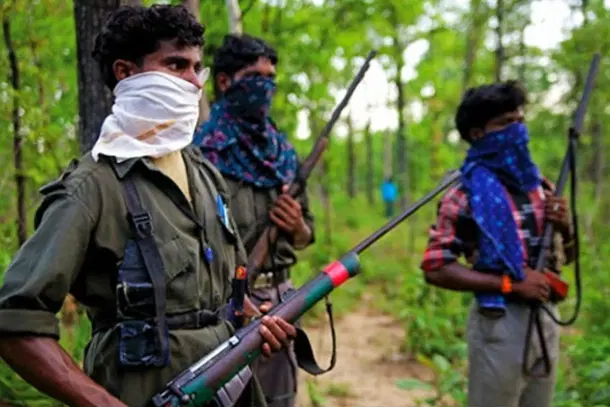
This relentless pursuit, backed by thermal imaging, drone surveillance and local tip-offs, has uncovered 250 caves, arms caches, and a Maoist hospital in Karreguttalu Hills, while 1,646 surrenders since 2024 have gutted Naxal morale and given crucial information about the movement and tactics of Naxals.
Precise intelligence, coordinated multi-force assaults, advanced tech like thermal imaging drones, and local surrender policies have crippled Maoist operations, making Operation Kagar a decisive step toward dismantling Naxal networks. The CRPF Director General, G P Singh, was even camped in the area to oversea one such operations.
The ranks of the Maoist leadership have been significantly depleted, with just 18 of the original 40 Central Committee and Politburo members still evading capture; the others have been either eliminated or apprehended. The unrelenting onslaught of Operation Kagar has forced Maoists into a desperate scramble. In the last three months, devastating losses have sent them fleeing deeper into Chhattisgarh’s jungles.
Congress' plea for talks betrays India’s fight
As security forces deliver a crushing blow to Naxal insurgents under Operation Kagar, the Congress, along with parties like the Bharat Rashtra Samithi (BRS) and the communist factions, has raised its voice in support of talks with Maoists—just when the insurgents are at their weakest. This call for dialogue is not a step towards peace; it reflects ideological sympathy and a troubling pattern of shielding anti-state elements. These parties, particularly Congress and the communists, have long shown affinity for those who share ideological roots with the Maoists.
Moreover, Congress has shamelessly coddled external enemies, as seen in their spineless ambiguity during Operation Sindoor, and propped up those who have questioned India’s democratic processes. Now, it is championing the cause of enemies within, pleading for Maoists who’ve waged a bloody war against the nation. This despicable pattern, rooted in Congress cozy ties with those peddling the Naxals’ toxic Marxist-Maoist ideology, exposes a cowardly refusal to crush threats with the resolve India demands.
Congress has a troubling record of failed negotiations with Naxals, often shaped by its ties to left-leaning intellectuals and sympathisers of the Maoist-Marxist ideology. In 2004, the Congress-led Andhra Pradesh government under Y S Rajasekhara Reddy initiated talks with Maoists, halting all anti-Naxal operations during the dialogue. The Maoists demanded land reforms and the release of jailed cadres.
However, the talks collapsed by January 2005, as the Maoists rejected the government's terms. It later became clear that the insurgents had used this "ceasefire" to regroup and strengthen their forces, leading to a surge in violence.
What made the decision even more troubling was that the Congress government initiated talks with the Maoists in 2004, despite their brazen attack just a year earlier on then-Chief Minister Chandrababu Naidu's convoy near Alipiri, Tirupati—an attack he narrowly survived.
Emboldened by the lull in operations during the talks, the Maoists escalated their violent campaign between 2004 and 2010, resulting in some of the worst Left-Wing Extremism (LWE)-related violence in recent decades.
The BRS has now jumped on the peace-talk bandwagon. BRS chief and former Telangana Chief Minister K Chandrashekar Rao (KCR) has urged the Centre to “stop” Operation Kagar and “hold talks with Naxals like in a democracy.” BRS MLC and KCR's daughter, Kavitha, has also echoed the sentiment, calling for a ceasefire and a “political solution”, arguing that force isn't the answer. This position is consistent with the BRS’s history during its Telangana rule (2014–2023), when it largely avoided aggressive anti-Naxal operations, allowing Maoists to operate virtually freely in border areas.
The communist parties, particularly the CPI(M), have been even more blatant. Their Marxist-Leninist ideology closely mirrors the Maoists’ worldview, making them natural sympathizers. In March 2025, the CPI(M) central committee expressed its willingness to negotiate peace with the Centre and state governments—but only if Operation Kagar was halted. They labelled the operation a policy of killing and annihilation, despite the Maoists’ own bloody record of armed rebellion and civilian killings.
This reflects the communists’ longstanding reluctance to condemn Naxal violence outright, often framing it as a misguided struggle against inequality.
Recent developments reinforce this pattern. In April, a Peace Talks Committee met with Congress leader and Telangana Chief Minister Revanth Reddy in Hyderabad, urging him to pressure the Centre for a ceasefire and talks. Reddy said he would consult with the Congress leadership, signalling openness to the idea.
A day later, Revanth Reddy promptly paid a visit to senior Congress leader K Jana Reddy to “discuss” the issue. One can’t help but marvel at the nostalgia—after all, Jana Reddy was the very Home Minister who, back in 2004, oversaw the ill-fated talks with the People’s War Group in undivided Andhra Pradesh. It’s almost as if Revanth Reddy is trying to faithfully recreate the disastrous 2004 script, where talks gave Maoists the breathing room to regroup, rearm, and unleash a deadlier wave of violence.
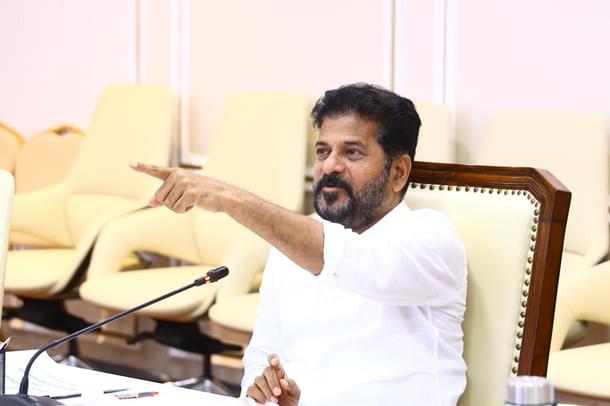
This came as Maoist leader Mallojula Venugopal Rao proposed a ceasefire—a clear sign of desperation as security forces closed in. Congress and its allies should be alarmed to find themselves making the same demands as those who have killed thousands of tribals over the past few decades and held lakhs hostage through violence and anti-state activities. And yet, they show no such concern.
If the failed history of past negotiations has taught us anything, it is that such initiatives only serve as a “strategic timeout” for the Naxals, not a genuine path to peace. Congress leadership, more than anyone, should recognise this. Yet, they appear to have sacrificed hard-earned lessons at the altar of political correctness—perhaps to appease their far-left courtiers.
BJP-ruled states have fared better
With Congress-ruled Telangana openly batting for talks, its support for anti-Naxal operations is little more than empty paperwork and token gestures. In contrast, BJP-ruled Chhattisgarh has spearheaded an uncompromising offensive against Naxalism.
Deputy Chief Minister and Home Minister Vijay Sharma has dismissed peace talk proposals, criticising advocates’ silence on tribal deaths in the past. Sai too is against talks, vowing to continue operations until Maoists surrender arms.
In contrast, Congress’s Bhupesh Baghel, the former Chief Minister of the state, has questioned anti-Naxal operations, claiming to “stand with those impacted,” seemingly sympathising with Naxals while ignoring Bastar’s terrorised tribals. It’s no surprise that when Baghel became Chief Minister in 2019, he made headlines for saying that his government was not focused on “encounter figures or Naxal body counts” but was instead keen on initiating dialogue, adding the "the policy of bullet-for-bullet has failed miserably".
Since taking power in 2023, Chhattisgarh’s BJP government has established numerous security camps, with 30 opened last year across five Maoist-affected districts, including nine in Bijapur, 11 in Sukma, and seven in Narayanpur, to secure remote areas and disrupt Maoist strongholds like the People’s Liberation Guerrilla Army.
Additionally, the formation of a joint task force (JTF) with neighboring states has strengthened border security, enabling operations to penetrate deep into Maoist territories such as Abujmarh, reducing the distance to the Maharashtra border from 45 km to 15 km.
Parallel to these security measures, the Chhattisgarh government is prioritising development to erode Maoist influence by addressing the socio-economic grievances exploited by insurgents. Through the Niyad Nellanar scheme, governance has reached 118 villages near security camps, delivering essential services like Aadhaar cards, ration cards, solar lighting, and piped water.
Infrastructure development—such as the construction of 18 approach roads in Narayanpur and the introduction of bus services linking Maoist-affected villages to Bijapur town—has significantly enhanced last-mile connectivity. Notably, investments of ₹33 crore in Bijapur and ₹8 crore in Narayanpur have been made for roads and bridges.
Every day marks a step into previously uncharted territory. For instance, just last week, seventeen villages nestled in the remote, mountainous, and densely forested terrain of the Naxal-affected Mohla-Manpur-Ambagarh Chowki district were connected to the power grid for the first time, officials announced on Friday.
The government has also relaxed verification norms to ensure access to welfare schemes like Pradhan Mantri Awas Yojana and MGNREGS, fostering trust in the state and diminishing Maoist appeal, with Chief Minister Vishnu Deo Sai claiming that 100 villages have been freed from Naxalite influence.
The Chhattisgarh government's relentless push to bring development to these areas, combined with coordinated operations alongside the CRPF, has forced the Naxals to retreat deeper into the jungles, where they are now being cornered and hunted.
This fight proves India can triumph when it priorities strength over sympathy, securing its heartland for good. India demonstrated this in Operation Sindoor, establishing deterrence by learning from the futility of repeated talks with Pakistan. It is now proving it through the relentless pursuit of Naxals in Operation Kagar.
Prakhar Gupta is a senior editor at Swarajya. He tweets @prakharkgupta.





